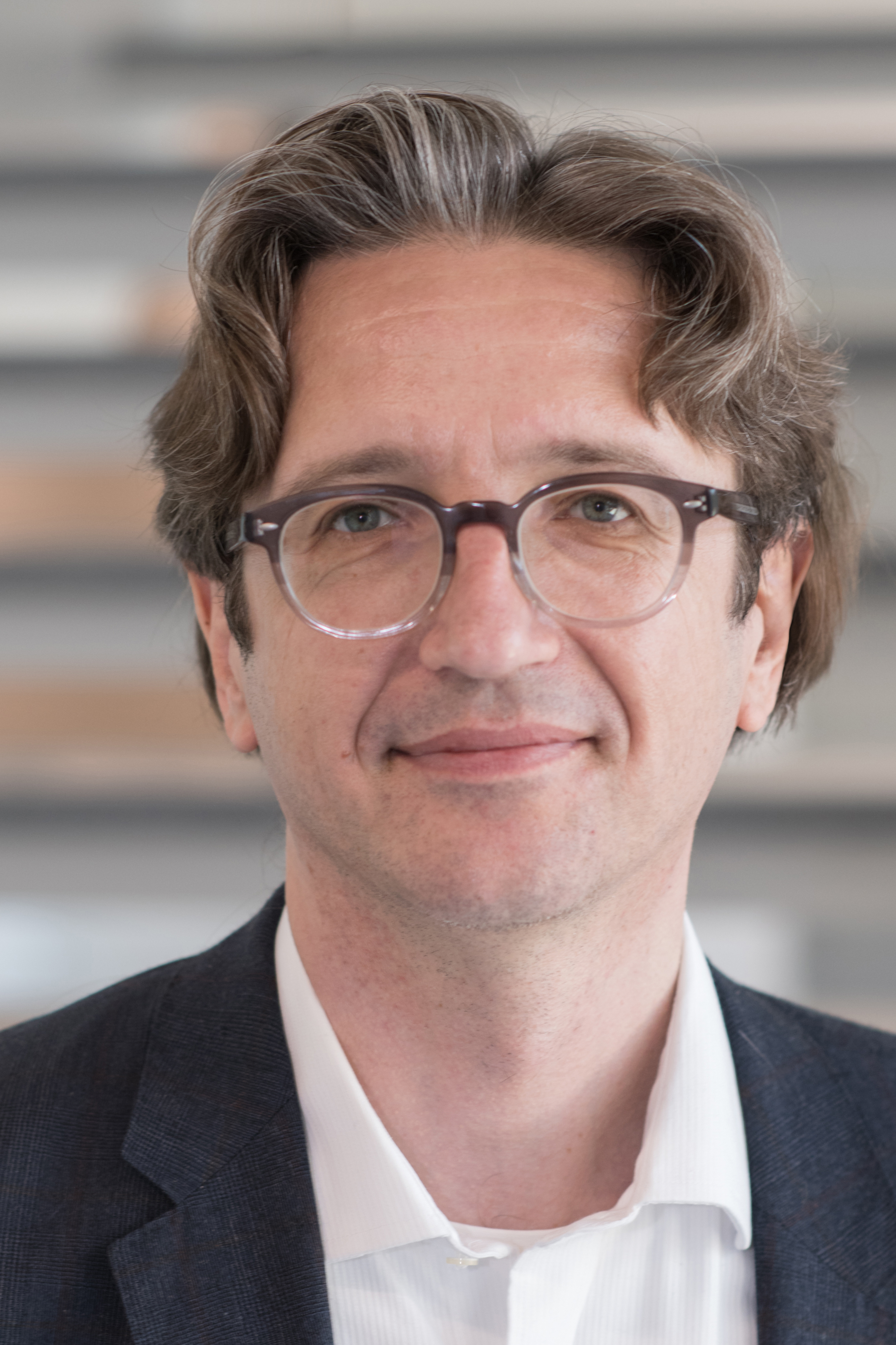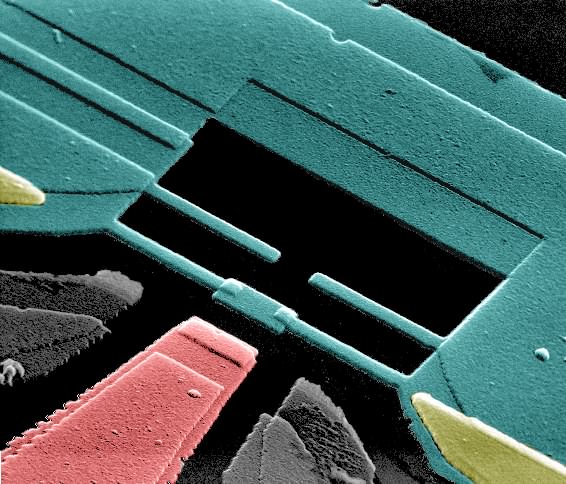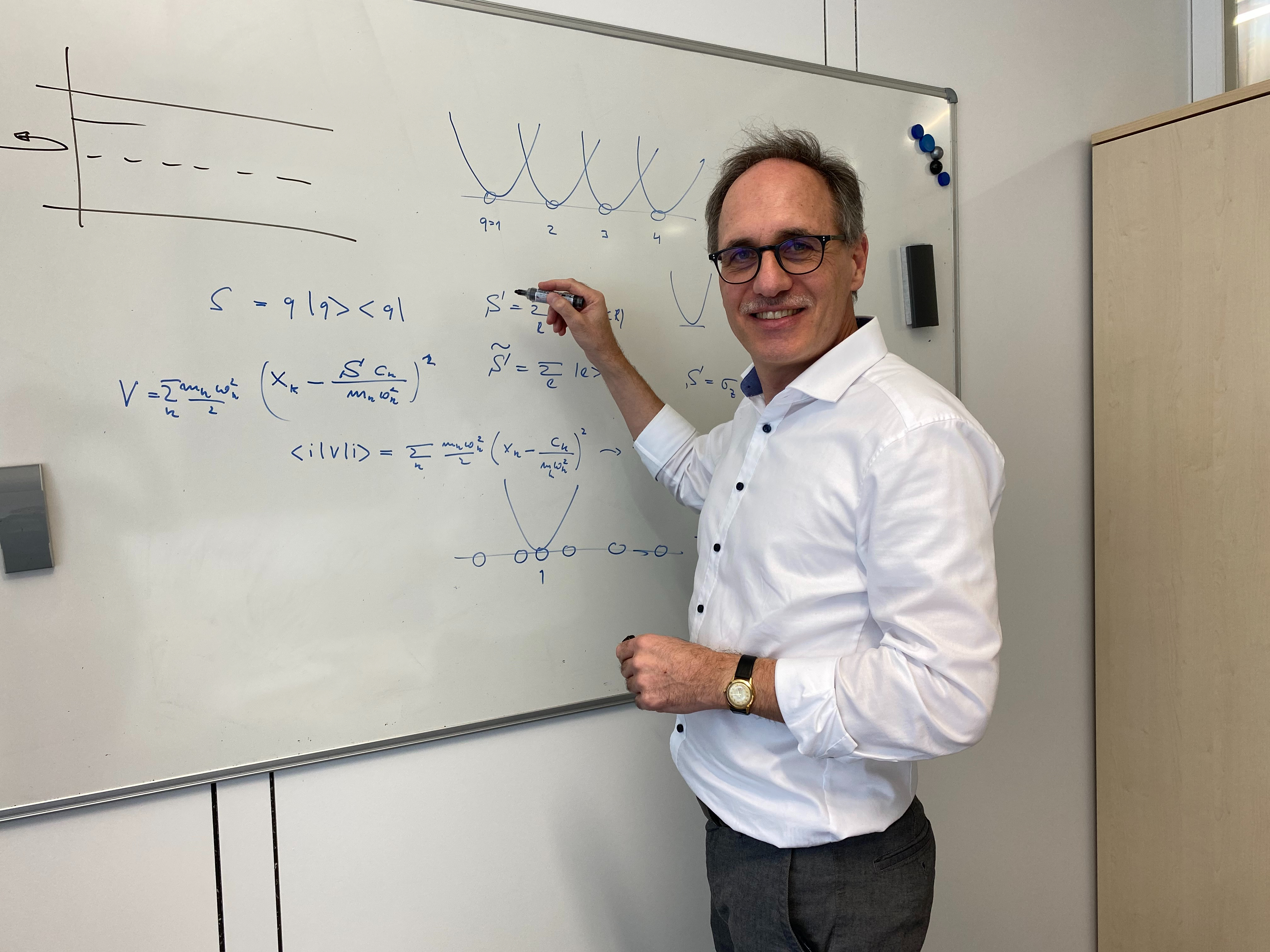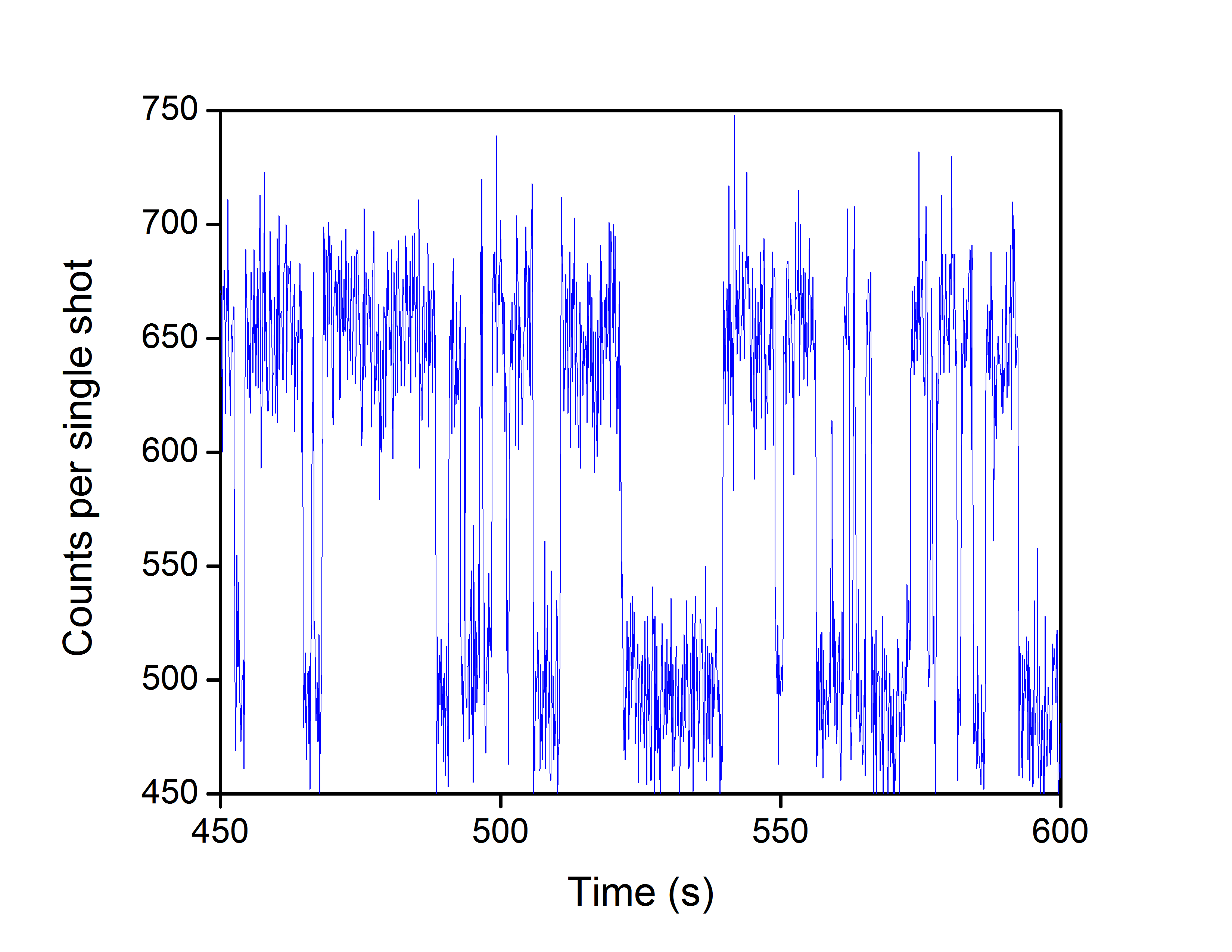Quantum Technology Ulm
Diamonds for life sciences innovations
The world's first commercial quantum computer,’IBM Q System One’, is now in operation in Ehningen near Stuttgart. This is a major leap forward in quantum technology in Germany. It marks the point at which conventional computers reach their limits. The University of Ulm is involved in three of six collaborative projects being funded by the Baden-Württemberg Ministry of Economic Affairs, Labour and Housing Construction. The projects are aimed at setting up complex simulations ranging from drug development and medicine to battery research.
Associating quantum physics with the word ‘simple’ seems strange. However, quantum physics is basically just a few seemingly simple formulas that explain all the theories about the world around us. It becomes difficult to present and use this basis as a tool. This is where researchers from six Fraunhofer Institutes, 16 other research institutions - including the University of Ulm and the German Aerospace Center - and 40 companies come in as partners. The overarching goal is to develop scalable architectures that open up new potentials for database searches, material development and simulations for medicine, and environmental and life sciences. For this purpose, the IBM quantum computer ‘IBM Q System One’ is available to all participants in the Fraunhofer competence network.1
What makes quantum technology so exceptionally fast?
 Prof. Dr. Jelezko, director of the Institute of Quantum Optics in Ulm. © University of Ulm
Prof. Dr. Jelezko, director of the Institute of Quantum Optics in Ulm. © University of Ulm"Many problems cannot be solved accurately by conventional computing," explains Prof. Dr. Fedor Jelezko, director of the Institute of Quantum Optics in Ulm. "For example, if you want to calculate the exact properties and behaviour of individual molecules, you can usually only obtain an approximation. However, the quantum computer provides relatively easy, precise and quick solutions."
Conventional computers store information in the form of bits that can only have two possible states: one and zero. In contrast, a qubit of a quantum computer exists in a superposition state for a certain period of time: one, zero and everything in between - a kind of wave equation with multiple simultaneous states.
Moreover, there is another phenomenon that makes quantum systems faster. "Several qubits can be set in oscillation in a coupled manner," says Jelezko explaining the principle of quantum entanglement. Qubits thus form a system that can be analysed and manipulated as a whole.
Superposition:
In normal computers, bits are the smallest units of information, they can either be zero or one. A combination of several bits is used for computing operations, which have their limits when complex calculations are required. Quantum computers use qubits: qubits can be zero and one at the same time - like a coin with heads (zero) and tails (one) that keeps spinning when tossed in the air. The state is exponential: if, for example, four classical bits are each represented in only one of 24, i.e. 16, arrangements, four qubits, on the other hand, are in all of these 16 combinations at the same time. A quantum computer can therefore check all possible solutions to a problem simultaneously, whereas a conventional computer checks them one after the other. The quantum particle holds both states until it is measured. It then leaves the superposition state and falls back into one of the two states, zero or one, which can be stored in a classical bit.
Entanglement:
If a qubit is put in a certain state, the state of the other qubits entangled with it also changes at superluminal speed. Since several qubits are quantum entangled with each other, quantum computer calculations are faster than light.
The crux: puzzling without interference
 Electron microscope image (coloured) of a superconducting circuit (blue-green). The small rectangular blue-green island (above red structure), which is connected to the ‘surrounding area’ by two narrow bridges, represents an artificial atom. A qubit is realised as a state in such an artificial atom, the remaining feed lines etc. are used for manipulation, control and measurement (red; light green structure: reduces interfering influences). The image comes from one of the first working qubit realisations on which Prof. Ankerhold carried out theoretical work at CEA Saclay. © Quantronics Group, CEA Saclay
Electron microscope image (coloured) of a superconducting circuit (blue-green). The small rectangular blue-green island (above red structure), which is connected to the ‘surrounding area’ by two narrow bridges, represents an artificial atom. A qubit is realised as a state in such an artificial atom, the remaining feed lines etc. are used for manipulation, control and measurement (red; light green structure: reduces interfering influences). The image comes from one of the first working qubit realisations on which Prof. Ankerhold carried out theoretical work at CEA Saclay. © Quantronics Group, CEA SaclaySeveral qubits, usually grouped together in registers, are needed to solve complex arithmetic operations. The crucial thing: they should be able to fiddle around in peace. "Qubits must be immune to interference and at the same time easy to manipulate, so that in the end the correct result comes out with a high probability," says Jelezko explaining the challenge. To achieve this, the qubits should remain in the superposition state for as long as possible until the computing operation has been completed.
But how can uncontrolled interference factors, for example electric, magnetic fields and phonons, be kept away? IBM - like Google with ‘Sycamore’ - is relying on superconducting quantum chips that lose their electrical resistance at a temperature of minus 273 degrees Celsius. Colder than in space - but with the advantage that interference factors are greatly reduced under these conditions and computing can run accurately.
The bizarre thing is that because superconductors conduct electricity without resistance, quantum states can be assumed without loss and in a relatively stable manner. Superconducting systems absorb the energy through microwaves - the manipulation step. This raises them from a lower energy state (zero) to a higher one (one). This is where empirical values and theoretical calculations on microwave radiation time are required. After all, we are seeking to delay a hundred percent energy transition and achieve a probability wave in between. The big calculations can begin.
Ultimately, a single result can be obtained as a solution by superimposing the probability waves to 0 percent (zero) or 100 percent (one). The crux: one probability wave generates different probability values when measured, which makes it necessary to repeat the operations many times. This is precisely where the quantum researchers from Ulm come in. They are aiming to create more stable and scalable systems that maintain the entanglement time for a long period and calculate multiple, more complex algorithms.
A sparkling path out of the freezer
A large number of qubits are required to iron out errors. "Existing quantum computers consist of a few qubits and only work at extremely low temperatures. This is the case with ‘IBM Q System One’, which depends on 50 superconducting qubits," says Jelezko explaining the starting point of the joint ‘QC-4-BW’ project. Together with his team and Prof. Dr. Jörg Wrachtrup from the Institute of Physics at the University of Stuttgart and other scientists from Fraunhofer IAF, Fraunhofer ICT, the University of Konstanz and the Karlsruhe Institute of Technology, he is working on spin-based quantum registers. Right at the centre of the action: an artificial diamond.
"We are using colour centres in the artificial diamond by producing it specifically to include foreign atoms." Roughly speaking, space is created in the lattice for the inclusion of a nitrogen atom. This so-called NV centre contains a single electron - locked in, as it were. It can be excited by laser and microwave light to create a qubit. The advantage: no cooling is necessary to exclude environmental effects. The high binding forces of the lattice components ensure that the frequencies of the oscillations are not thermally excited even at room temperature.
 Unlike in the pure carbon lattice, NV centres in the diamond lattice can absorb or emit visible light. NV centres are therefore also called colour centres. © Fedor Jelezko
Unlike in the pure carbon lattice, NV centres in the diamond lattice can absorb or emit visible light. NV centres are therefore also called colour centres. © Fedor Jelezko
Stably scaled for the next step
 Prof. Ankerhold, director of the Institute for Complex Quantum Systems in Ulm © private
Prof. Ankerhold, director of the Institute for Complex Quantum Systems in Ulm © privateHowever, the very nature of such a diamond lattice means that it is limited to a few qubits. In another project, the Ulm researchers are therefore working on the fundamentals of scaling. "Coupling several registers with more than 30 qubits is our next goal. Coupling with superconducting quantum computers or even conventional computers is also conceivable," explains Prof. Dr. Joachim Ankerhold. The director of the Institute for Complex Quantum Systems at Ulm University is working on the colour centres in ‘SiQuRe’, a joint project with other scientists from the Fraunhofer Institute for Mechanics of Materials (IWM) and the University of Freiburg. "Using models and simulations from theoretical quantum physics, we want to test the extent to which crystal-based platforms can serve as the basis for quantum computers," explains Ankerhold. The researchers will be supported by the Ulm supercomputer JUSTUS 2. Only then will the models developed be transferred to ‘IBM Q System One’ - and then follows the excitement of testing whether the system is suitable for solving scientific questions - for example for material and drug development.
Detecting diseases early and developing new medicines
Calculating all the properties of all atoms in a molecule is often an impossible task for conventional or even supercomputers. Quantum systems could enable precise simulations and analyses of molecules that are relevant to certain disease mechanisms. The major goal here is to develop more effective active substances and personalised therapies. Mutations or epigenetic changes in DNA could also be detected more precisely and quickly.
 Quantum leaps of the NV centre: when nitrogen atoms are added to a crystal, the crystal acquires special quantum properties: its quantum state shows abrupt changes between two eigenstates. © Fedor Jelezko
Quantum leaps of the NV centre: when nitrogen atoms are added to a crystal, the crystal acquires special quantum properties: its quantum state shows abrupt changes between two eigenstates. © Fedor JelezkoArtificial nanoscale diamonds can also be used to improve sensors and imaging methods in order to make structures and functions of individual biomolecules visible under physiological conditions - with an up to 10,000 times higher sensitivity than current methods. Jelezko highlights the potential for medical technology: "In magnetic resonance imaging, structures could be depicted at a much higher resolution and cancers could be detected earlier." Cardiovascular diseases could also be diagnosed early with the help of a diamond polariser that measures the smallest magnetic fields in metabolic processes of the heart tissue. "The much increased sensitivity could be revolutionary in areas ranging from imaging human brain activity to Earth observation from space," explains Ankerhold.
The joint ‘QuEST’ project, in which the Ulm Quantum Technology Institute is also involved, seeks to optimise the material design of batteries. The Helmholtz Institute Ulm (HIU) and Fraunhofer IWM are partners in the project led by the Institute of Technical Thermodynamics of the German Aerospace Center (DLR).
1) The Baden-Württemberg Ministry of Economics, Labour and Housing is providing six collaborative projects with funding of over 19 million euros. The ‘Quantum Computing Baden-Württemberg’ competence centre, coordinated by the Fraunhofer Institutes for Applied Solid State Physics (IAF) and for Industrial Engineering and Organisation (IOF), is part of a Germany-wide competence network. For this purpose, the IBM quantum computer ‘IBM Q System One’, which was installed in Ehningen in the Böblingen administrative district in January 2021, is available to all participating partners.